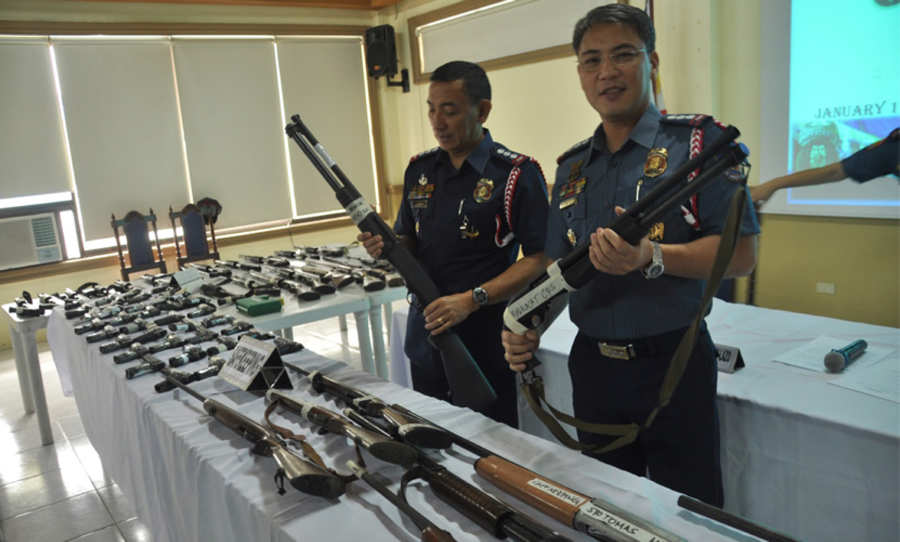
A veteran lawmaker has called on for an inquiry that would look into the state of the ballistics database of the Philippine National Police – Crime Laboratory Service or PNP–CLS.
Valenzuela City Congressman Win Gatchalian said ballistics database will greatly help in going after perpetrators of indiscriminate firing and other gun-related crimes.
In filing House Resolution No. 1791, Gatchalian wants the House Committee on Public Order and Safety to probe PNP- CLS’ capability to track firearms used in gun-related crimes.
The former Valenzuela City mayor expressed belief that having a PNP with good ballistics database and firearm-tracking capability will help authorities identify and arrest not only suspects in gun-related crimes but also irresponsible trigger-happy gun owners.
Gatchalian filed the legislation after being alarmed over the rising number of stray bullet incidents, with the highest posted during the last two weeks of 2014.
A total of 62 incidents of indiscriminate firing were recorded, resulting in 44 people injured and a casualty– an 11-year-old girl from Bangued in Abra.
“For these 62 stray bullet incidents, only 17 arrests have been made and it has yet to be seen if criminal charges can be filed against these people, depending on the availability of solid evidence against them,” said Gatchalian, a leading member of the Nationalist People’s Coalition (NPC).
He added the PNP – CLS’ ballistics and firearms recognition division has already bought the Integrated Ballistic Identification System (IBIS).
The said identification system uses state-of-the-art 3D imaging technology to capture, store, and rapidly compare huge number of digital ballistic images; thus, it dramatically shorten the time to find a match between two or more pieces of evidence.
The lawmaker, however, deplored that the Crime Laboratory only has two IBIS machines, making it virtually impossible for the PNP to make a database of the roughly 1.7 million registered firearms in the whole country.
“It’s high time for the PNP to prioritize the ballistics database of the 1.7 million registered firearms by procuring the sufficient number of IBIS machines and training technicians who will operate these machines,” Gatchalian pointed out.
Manufactured by Forensic Technology of Montreal, Canada, IBIS is the de facto world standard in automated firearms identification systems, used in nearly 60 countries, including the United States, South Africa, and England.
The PNP has been trying to buy IBIS since 1995, but budgetary constraints prevented it from acquiring the technology until the project was classified as priority project by the PNP Program Management Office under the PNP’s Integrated Transformation Program.
After a lengthy study, the PNP found that the benefits of IBIS will be maximized by developing both a crime database, and a registration database. The crime database will enable investigators to “link” gun crimes– to find out if ballistic evidence recovered from a particular crime scene came from a gun that has been used in other crimes.
The registration database will contain information from all licensed guns in the country. Investigators will be able to quickly identify the owner of a licensed gun from recovered ballistic evidence, if ever the firearm is used in crime.
Gatchalian learned that the Crime Laboratory’s IBIS is currently not operational since it has not been upgraded after its purchase in 2011. PNP insiders claimed a system upgrade in the IBIS technology costs around P13 million.
“The PNP should upgrade their database and firearm-tracking technology. Every gun in the country should be accounted for and the unique features of each gun should be kept in the database as this is part and parcel of the campaign against criminal elements,” said Gatchalian.
He stated that the IBIS technology is a big boost to the anti-criminality effort since the traditional method in examining ballistic evidence with a comparison microscope will take a firearm examiner, working 24/7, more than 13 years just to determine if the recovered evidence matches any of the more than a million licensed firearms.
On the criminal investigation side, it will take the same firearm examiner almost a year and a half to compare against the more than 100,000 pieces of ballistic evidence currently on file at the PNP – Crime Laboratory.
“It is this exceedingly long time to do manual comparison that limits the ability of investigators to leverage the tried and tested methods of firearm identification both in criminal investigation and in law enforcement,” explained Gatchalian.
“IBIS technology is the game changer since once the databases are built, it will only be a matter of hours or even minutes for IBIS to compare a piece of evidence against the entire database of licensed firearms.”
The solon will also look into reports that the current PNP – Crime Laboratory warehouse is “too small” to hold all the ballistic records (slugs and cartridge) of all the registered firearms numbering almost two million, including the firearms issued to the Armed Forces and other law enforcement agencies. (R. Burgos)


